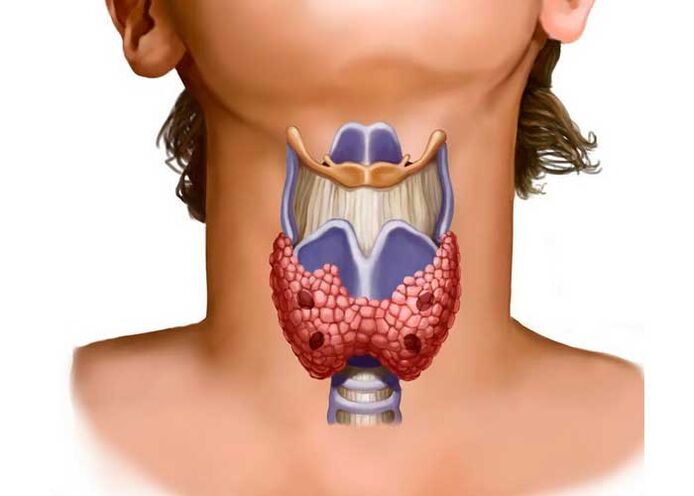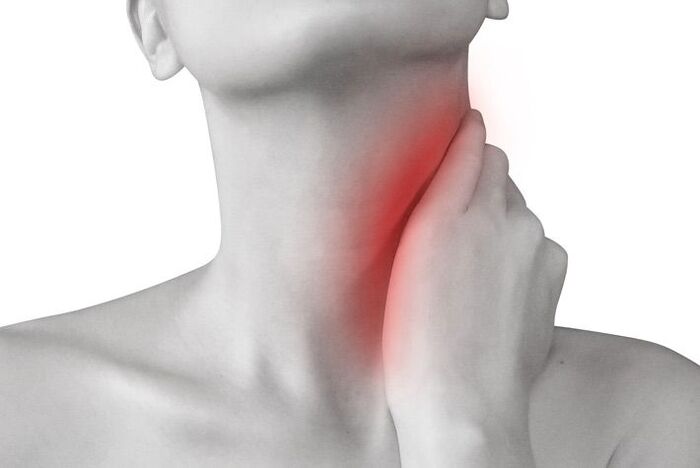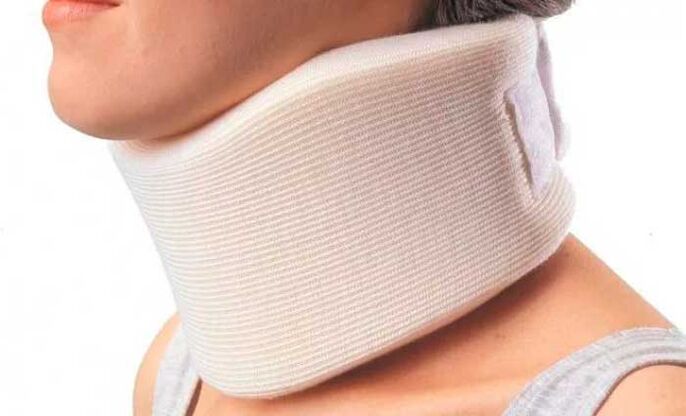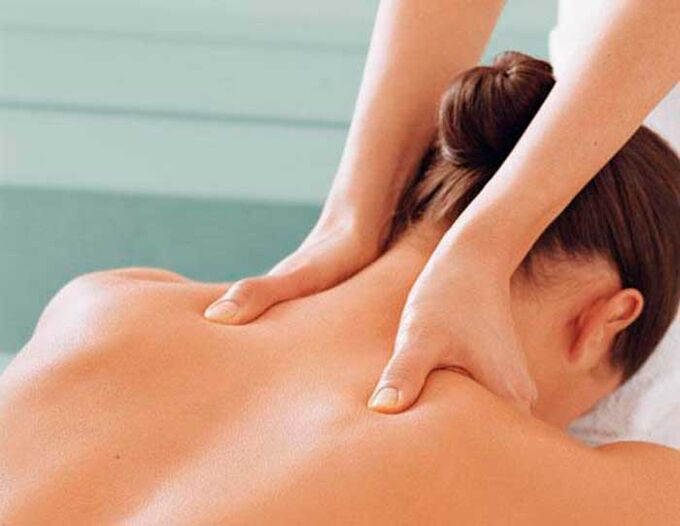
The neck is considered to be the life-determining part of the human body. The main blood arteries, veins, capillaries, and nerve fibers run through it, forcing the entire body to work at full capacity. The blood channels supply the brain with nutrients and oxygen, without which the most important organ of the nervous system cannot function normally. When a person has neck pain, it is necessary to investigate the causes of the disorder and eliminate them as much as possible.
Types of Neck Pain
The pain syndrome is divided into two main groups:
- Cervicalgia (lumbago) - regular, with different strength and dynamics, spreads to the shoulders and beyond. It often has a pulling, sore character. The cause is a painful spasm of the neck muscles.
- Cervicago is a sharp pain that occurs unexpectedly with unexpected sharp turns of the head, a long stay in an uncomfortable position. At the same time, a person is unable to freely rotate their neck and nod due to severe pain. "Shoots" shoulders, chest, hands. This pain is related to the action of stimuli on the nerve endings that run near the brain.
Causes of the disturbance
Patients often have a sore throat. Sometimes unintentional head movements cause back cramps. Occasionally there is discomfort in the back of the head. It is particularly uncomfortable when the pain syndrome manifests itself in the morning through an uncomfortable posture while sleeping.
When unfavorable circumstances coincide, pain can result from the consequences of untreated infectious diseases. They are so unbearable that it is impossible to think about the reason for their occurrence.
Neck pain occurs for a number of reasons:
- Unspecific.
- Vertebrogen.
- When there is a malfunction of the internal organs.
- With the development of oncological formations of a benign and malignant nature.
- In case of injury.
- With inflammation of the bone tissue (subacute osteomyelitis, purulent lymphadenitis, spinal paralysis, meningitis, aggravated thyroiditis).
Unspecific reasons

Patients often have unspecific pain. They arise as a reaction to overuse of the neck muscles and are considered a natural reaction of the body. Usually this feeling occurs when a person has been lying in an uncomfortable position for an extended period of time or is physically overworked.
Neck pain due to heavy loads of a dynamic nature. In order to get rid of unpleasant sensations, the body needs to rest well. This pain isn't too intense, doesn't last long, and goes away on its own without requiring special treatment.
With persistent overload, the physiological pain takes on a chronic form - a degenerative-dystrophic process begins. Harmful factors should be eliminated immediately if there are alarming symptoms, and not wait for the disease to develop.
The statistical cause of pain can be:
- Wrong position when sleeping.
- Frequent head movements.
- High firm pillow.
Causes of vortices

Dysfunction of the cervical vertebrae, intervertebral discs, the joints, ligaments and muscles that connect them is the answer to the question of why the neck hurts. If the pain syndrome is constantly observed, then on the X-ray examination, degenerative-dystrophic diseases of the spine are recorded in such patients. The neck is prone to this disease due to its anatomical structure:
- The neck joints are extremely flexible.
- The vertebrae are very fragile in structure and small in size.
- They endure enormous loads every second and support the skull.
- Neurovascular fibers are located inside the vertebrae.
Degenerative-dystrophic pathologies include:
- Osteochondrosis.
- Kyphosis.
- Spondylolisthesis (Listez).
- Lordosis.
- Spondylopathy.
- Spinal stenosis.
- Intervertebral hernia. Her neck hurts, mainly on one side.
With such diseases, complications in the form of torticollis, protruding discs, compression of the spinal cord tissue, progression of the sciatica, deformation of the spine, persistent headache, dizziness, and ringing in the ears can occur.
Internal problems

Front neck pain is associated with a malfunction of the thyroid gland. They usually manifest themselves in inflammatory lesions of the gland (thyroiditis), are acute, subacute, chronic or autoimmune in nature. The fault is indicated by:
- Increases body temperature.
- Lethargy, drowsiness.
- Redness, possibly swelling of the skin in the front of the neck.
- Choking, difficulty swallowing.
Thyroiditis systematically causes throbbing pain. It grows when swallowing, turning the head, probing the gland.
Unexpected neck pain from the side signals inflammation of the lymph nodes in diseases of the ENT organs. The provocateurs of this state can be:
- ENT diseases of another kind (pharyngitis, laryngitis, sinusitis, otitis media).
- Dental caries.
- Inflammation of the gums.
- Retropharyngeal abscess.
- Diseases of a contagious nature.
The neck may swell noticeably and lose its shape. The temperature rises quickly, symptoms of the development of the underlying disease are noted.
Development of oncological neoplasms

Neck pain provokes cancer of the vertebral tissues, blood vessels, and internal organs in the neck. Spinal tumors can be:
- Primary (mesenchymal chondrosarcoma, osbolithosarcoma, lymphangioma).
- Secondary (myeloma, lymphogranulomatosis).
It happens that the causes of neck pain lie in tumors of the spinal cord and nerve fibers.
Neck injury

The spine in the neck area is more fragile and vulnerable, which means that it is prone to injuries of varying degrees of severity, such as:
- Fractures, bumps, bruises.
- Dislocations, subluxations.
- Sprains, torn ligaments and muscles.
- Rupture of the intervertebral disc fragment.
- Extensive bruises, bruises.
- Compression of the tissues of the spinal cord.
Neck injuries are extremely dangerous. This area contains important centers that enable the spinal cord to function. Affection of the brain at the level of 1 and 2 segments of the cervical vertebra results in immediate death. Injuries to the lower segments can prevent a person from feeling their body under the neck and unable to move. 7th and 8th vertebra trauma affects the lower extremities.
Inflammation of the bones
The cervical spine can suffer from inflammation. Often they are due to the nature of systemic connective tissue diseases:
- Limban Sachs disease.
- Rheumatoid arthritis.
- Periarteritis nodosa.
- Wagner's disease.
- MCTD (Sharpe Syndrome).
- Progressive systemic sclerosis.
- Vasculitis.
- Ankylosing spondylitis
When a patient's neck is sore and sore, the causes are often linked to ankylosing spondylitis (ankylosing spondylitis). In this case, the vertebral joints become inflamed, deformed, and the cervical vertebrae become completely immobile.
Neck pain in a child

In children, unlike adults, a sore throat is not hidden in the defeat of vertebral tissues and structures, but in:
- Lymphadenopathy.
- Bone tuberculosis.
- Zaushnitsa (pig).
- Meningitis.
- Tetanus.
- Lung infection.
- Retropharyngeal abscess.
- Rheumatic diseases (polyarthritis, oligoarthritis).
When a child has neck pain and discomfort, it cannot be ignored. Consultation with a pediatrician is necessary as the causes of this condition can be extremely serious.
Therapies and diagnostics

You can get rid of pain completely by determining the cause. You can relieve symptomatic painful sensations with the following drugs:
- Analgesic and anti-inflammatory nonsteroidal drugs.
- Muscle relaxants that relieve muscle tone and cramps.
- Hormonal glucocorticoids. They are used to increase the effects of pain relievers.
- Chondroprotectors have long been used to restore cartilage tissue and stop the breakdown process.
- Decongestants, anticonvulsants, antidepressants, vitamin therapy to eliminate chronic pain.
An experienced professional should be involved in managing the disorder. First you need to see a therapist. Depending on the complaints, he will assess the general condition of the patient, tell you why the neck hurts, how the pathology is treated, what irritating factors should be avoided.
Depending on the causes of the disease, the therapist recommends visiting such narrow specialists:
- Rheumatologist.
- Orthopedist.
- Traumatologist.
- Neurologist.
- Masseur, chiropractor.
- Physiotherapist.
With a sore throat, such research methods are prescribed as:
- General blood analysis.
- Determination of the ISR.
- Examination for rheumatoid factors.
- X-ray of the spine.
- CT and MRI (computed and magnetic resonance imaging) of the spine.
If an adult or child develops neck pain, it could be a sign of osteochondrosis, meningitis, a result of stress, or a side effect of taking certain medications. Doctors need to determine exactly why their patient has persistent neck pain.
If, after the examination, it turns out that inflammation of the lymph nodes has become the main cause of neck pain, then they are prescribed:
- UHF.
- Back massage and skull base.
- Remedial gymnastics.
- Medication.
You cannot ignore the disease. In the later stages of its development, surgery is required to open the lymph nodes and cleanse them of any accumulated pus.
Non-drug treatment

Complex therapy strengthens the muscles of the neck, helps eliminate spasms, makes them flexible and elastic, improves blood circulation, restores the maneuverability of the cervical vertebrae, prevents the exacerbation and development of the disease. To do this, use:
- Physical therapy.
- Acupressure.
- Manual therapy.
- Physical therapy.
- Wearing rail collars.
- Spa treatment.
- Acupuncture.
- Spine traction.
In the acute phase, physiotherapy, massage, and gymnastics are not used until the pain stops. Modern methods of physical therapy allow you to achieve a successful result without using strong drugs and surgical intervention. That:
- Hilamat hardware system (Elgos).
- Therapy with laser grip.
- Electrophoresis.
Doctors advise patients what to do if their neck is sore. Necessary:
- Sit up straight, not stooped, to read, write, or eat.
- The work chair must have an ergonomic backrest.
- Be careful of your posture as you walk.
- Sleep on a small orthopedic pillow.
- Rub the throat with prescribed ointments or gels with an analgesic effect three times a day.
- Do a self massage to get rid of pain.
If you have acute or painful neck pain, you must not:
- Throw your head back sharply.
- Often turn on the affected side.
- Work, read, and write continuously in a stooped position.
- Abuse with a rail collar.
- Sleep on a large, tall pillow.
What to do if you have a blow job

Severe pain in the neck, accompanied by inflammation of the muscles, occurs with prolonged exposure to cold air currents. People sometimes complain that they got their necks blown. Doctors call this condition myositis. At the same time, the patient can not calmly turn, tilt, throw his head back, his neck hurts a lot.
A doctor will help you get rid of the disease quickly and effectively. Before visiting his office, there are a few steps you can take to relieve discomfort and pain:
- The painful area must be lubricated with a warming ointment (as a rule, such ointments have an unpleasant smell and cause a burning sensation on the skin).
- Massage the neck with gentle, light movements.
- Apply dry heat to the inflamed area (wrap yourself in a woolen scarf, fasten a terry towel).
- Try not to make any sudden movements.
Do not take pain medication without consulting a doctor. Only a doctor can prescribe them and determine the dosage.
Treatment of osteochondrosis of the neck
Neck problems with osteochondrosis are more common than those with the lower back. Often the lower vertebral segments are affected - 5-6 or 6-7. The pain manifests itself in the back, shoots in the left neck, it is felt particularly intensely during an exacerbation.
Osteochondrosis is a chronic disease that is manifested by a periodic exacerbation that can have vague symptoms for a long time. For treatment, the patient is prescribed:
- Physiotherapy (hydrotherapy is particularly effective for this disease).
- Analgesics.
- Taking nonsteroidal anti-inflammatory drugs. It is recommended to drink them within 3 weeks. Then the patient's condition is assessed and a decision is made about the further use of medication in this group.
- Special therapeutic gymnastics.
- Manual therapy.
- In addition to conservative medicine, treatment with folk remedies is welcome: lotions, compresses, decoctions, infusions, homemade ointments and creams.
If it was possible to get rid of osteochondrosis in the first stages, then one should not forget about prevention, in order to prevent the new development of the disease.
Folk recipes

Neck pain can be eliminated using folk recipes:
- Infusion of a series perfectly relieves inflammation. For the drug, 1 tbsp is needed. l. dry raw materials, filled with a glass of boiling water. After 3-4 hours of infusion and straining, the drug can be drunk half a glass before meals.
- An effective ointment is made from a mixture of St. John's wort, pine buds, eucalyptus leaves, mint and snake root. All components are ground into powder. Then 100 ml of boiling water is poured and boiled for 4-5 minutes. 75 g of melted butter (vegetables or butter can be used) are gradually added to the broth. The ointment is applied after hardening. Keep it in the refrigerator.
- In the same way, you can prepare ointments with plantain, hops, burdock, lavender, marshmallow, dandelion, yarrow.
- An excellent healing composition has an ointment based on dandelion root, birch buds, fruits of sown coriander.
In an emergency and with strict indications, surgical treatment is resorted to - if there are complications from vertebral diseases, the patient suffers from chronic severe pain that conservative treatment cannot cure for six months. Surgery to relieve neck pain carries enormous risks. Therefore, all available treatments to fight the disease should be taken first.
























